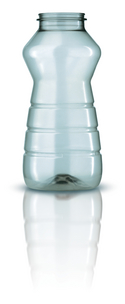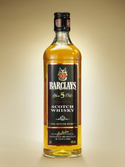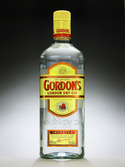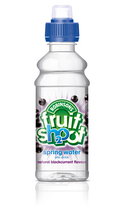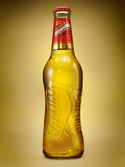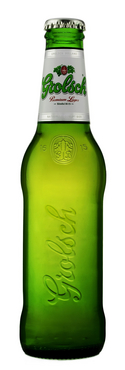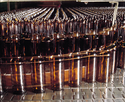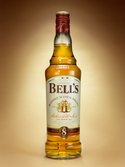That age-old trade-off
15 January 2007Current bottle design and branding is changing so rapidly that it is having a considerable impact on bottling lines. Rod Abbott looks at issues that go to the very heart of the trade-off between branding and production
While brands are trying to become more distinctive and more iconic, bottling lines and filling plants are measured in very different ways. In today's fiercely competitive environment, their objectives are driven first and foremost by a need to improve efficiency and reduce costs.
“This means production facilities are, in effect, looking for more rationalisation and standardisation of container design,” says Rockware Glass marketing manager Sharon Crayton. “So the objectives for brands and those of fillers would seem to be moving in opposing directions. Even so there are some good examples of where they are not mutually exclusive and where it is possible to do both. Take, for example, our recent redesign of the 300ml Groslch bottle.
“The bottle is lightweighted and has been designed to a shape which gives optimum filling line performance,” Crayton continues. “Yet the iconic design and distinctive body embossing work well to add a real point of difference for the brand.”
Obviously, bottle suppliers must reconcile these two issues to the satisfaction of all parties along the supply chain. Director of quality at Rockware John Parkes and his customer services team has even suggested creating a “design pipeline” where a partnership embracing all stages of a new product's evolution is set up between brand owner, designer and packaging producer.
“Where a complex bottle has been designed to run smoothly on a modern filling line,” adds Crayton, “moving the contract to a competitor for cost reasons alone can sometimes backfire on the customer. Quality is a multi-facetted concept, which takes a long time, and involves the competences of many people working as a cohesive team. Often it is only truly appreciated when the contract has been moved elsewhere.”
Not so long ago bottles were always produced with common height and diameter characteristics to enable different brands to be filled on the same line with little or no alterations to changeparts and machine settings. Today, such efficiencies have been combined with another priority - sustainability.
“The environment has moved from being an optional extra to become a concept right at the heart of our customers' business strategies,” says O-I UK sales and marketing manager Paul McLavin. “This is partly down to increased regulation and focus on business' effect on climate change, energy use and material consumption. It is also led by a genuine desire on the part of many consumers for products which are ethically sound and environmentally sensitive.”
Today, designers encourage packaging manufacturers to develop innovative glass designs, such as the range of lightweight standards launched last year by O-I into the Scotch whisky market. This range included the UK's first lightweight standard square whisky bottle, weighing just 385g.
“Our order book is full of leading brands seeking lighter packaging for environmental reasons, says McLavin. One recent example is the new pack for Gordon's Export London Dry Gin. O-I has made the containers using NNPB (narrow neck press and blow) lightweight glass technology. As a result, the 70cl version weighs as little as 408g.
One of the issues to be overcome is many brewers' perception that a heavy bottle equates to a high quality brand image, but Paul McLavin is convinced that the first brewer to adopt such “environmentally friendly” packaging will set the standard for others to meet.
The next sector to be lightweighted will be ales, it is widely expected. “There is huge interest from glassmakers and the brewing industry in WRAP's GlassRite project and this has translated into innovative work at O-I to find a solution for lightweight 500ml and pint ale bottles well under the current WRAP best practice level of 342g,” says McLavin.
WRAP research suggests that the current average weight of a 75cl wine bottle is 500g, although bottles of around 300g are in circulation. By encouraging lightweighting of wine bottles, WRAP is aiming to reduce the amount of UK glass waste by 20,000 tonnes. The project will build upon the success of WRAP's Container Lite project, which supported Coors Brewers in successfully lightweighting its 330ml Grolsch bottle by 13%, saving 4,500 tonnes of glass waste a year.
McLavin says: “There are implications for customers, from both a marketing and production perspective, of moving to lightweight glass technology. This is predominantly because lighter bottle designs tend to be slightly shorter than their heavier predecessors, leading to changes of filling line settings and requirement for new changeparts.
“However, once the investment is made, lightweight glass has proved robust and just as easy to run as heavier bottles. Marketeers can sometimes be reluctant to compromise their hard-won brand images, but are often pleasantly surprised to find that the dramatically sharpened embossing resulting from the use of NNPB more than makes up for any reduction in weight impression.”
Britvic's head of technical implementation David Gardner agrees with McLavin. “Our current innovation is largely focused on trying to design bottles that are stronger but require less secondary packaging, which in turn reduces the amount of waste as well as speeds up the process of getting bottles down the line. From a branding point of view, the functionality of the label design is key, as consumer information such as Guideline Daily Amounts becomes more important. Also it's important to get the brand cues right to ensure shelf stand-out in the highly competitive soft drinks category.
“As the complexity of bottle shape and design increases, we're finding that there is a need for diversity and flexibility in labelling equipment. “We are investing in more modular labellers that can label with a variety of materials and in a range of formats. In particular we need to be able to produce labels that are specifically tailored to the shape and design of a bottle, so that makes the process more complex.”
But Coors Brewers head of packaging development David Wiggins says that his company has overcome any potential labelling problems by simplifying its labelling equipment to the hilt. “This is good news for us, if not the labelling equipment manufacturers,” he says.
For many years, customers have sought to embody their brand values and differentiate their product from the competition through shaping the contours of the glass container. According to O-I, designers are now turning their attention to the cross-section of the bottle. “This makes for some very interesting and complex shapes, such as the Brahma beer bottle, which not only sways like an S, but also goes from a circular section through an oval and back to a circle again as you move along its length,” says McLavin. “Several other brands are beginning to experiment in this way as glassmakers develop the expertise to handle such complex shapes.”
Other recent designs include the introduction of shaped features into the glass profile, such as the bell introduced by Diageo for its latest glass bottle for Bell's Scotch whisky. Overseas markets have also adopted radical shapes. In Estonia O-I produces packaging for the A. Le Coq brewery, whose Premium Extra beer is presented in a 330ml amber glass conical bottle with eight angular faces.
Such developments are always carefully considered, since alterations to the cross-section can affect the container's stability as it travels along a filling line. Whenever a corner is introduced, such as the triangular or square sections, then the glassmaker must be confident that the radius is sufficient to ensure there is no weakness in the container. This is especially true when a pressurised liquid such as beer is involved.
Designing a distinctive award-winning glass bottle or jar has often been described as a black art. Designers at Rockware Glass have been applying new modelling technology to create realistic 3D prototypes, expand the complexity of the design, shorten lead times and improve quality.
Their main focus recently has embraced embossing, one of the most distinctive methods of decorating glass that often provides the most tangible expression of the brand and a quality impression. To create maximum impact, embossing is often located around the shoulder of the container, which also happens to be the trickiest area to work on.
Traditionally, the glass designer has supplied the mouldmaker with 2D artwork, which is used to produce the finished mould. But even the most precise engineering could fail to replicate the original artist's impression. Poorly machined moulds mean that the glass produced would often contain slight imperfections - called crizzles - on the embossing. As a result, new moulds would often have to be made and production repeated incurring additional costs and expensive delays.
The solution that would satisfy Rockware's customers and production colleagues came in the form of a desktop rapid prototyping system (Packaging Today - October 2006). “By creating a 3D model and capturing all the data of the container and specifically the embossing detail, our mould manufacturer can produce an exact and fault free mould,” says design department section leader Tony Baker. “This will form a clean, crisp and clear relief onto the shoulder of the container and customers can view within hours a prototype with the embossing, knowing that the end result will be identical.”
Of course, not all bottles are made of glass. They are increasingly being made from a range of polymers, and manufacturers of plastic bottles are faced with the same, if not greater, pressures to consider the environmental lobby.
A year ago, PET Engineering served up a 10g single-serve bottle. For the occasion of last autumn's Brau Beviale, the company presented a new, lighter solution - 5g for a capacity of 100ml.The dairy drink monodose bottle is intended to replace the HDPE containers often used for products such as neutraceutical drinks and smoothies because of its high performance and a claimed net reduction in production costs.
It was designed in partnership with Canadian company Husky Injection Moulding Systems, America's Invista and Sleever International, the latter providing the decoration. The process saw a study that allowed the volume of raw materials used to be significantly reduced, and the demands for an enhanced oxygen barrier required by some products to be optimised.
The outcome is a bottle that can also be easily customised through the use of appropriate sleeves.
The new single-serve monodose bottle is very light, allowing a weight reduction of around 2g compared to similar containers in today's market. It affords a net decrease in production costs, says the project partners, and a reduced impact on the environment.
The most critical area in this container's development was the planning of the preform, for which a tailor-made design was developed. This was undertaken by Husky in collaboration with PET Engineering, allowing the weight to be reduced to a minimum while maintaining technical performance.
The new bottle has been designed in two versions - one made from PET and the other from Invista's PolyShield PET barrier resin. An additional light barrier can be introduced using masterbatch or alternatively via the use of a heat shrink sleeve. The container has a simple design comprising clear lines, a well-designed grip and comfortable anti-slip ridges that guarantee the bottle an even more clearly defined image.
It has been designed so as to make it ideal for blowmoulding and manufacture on a production line, suitably adapted with stricter tolerance levels, a faster machine cycle and a more detailed temperature control. Furthermore, an optional snap-on cap allows the weight to be further reduced by sealing the container with aluminium film.
There is little doubt that the age-old trade off between branding and production will continue to dog designer, producer and customer but, where a partnership embracing all stages of a new product's evolution is set up, common benefits can be enjoyed by all involved. Most importantly, the industry and its customers stand to profit from better relationships between design and production teams.
